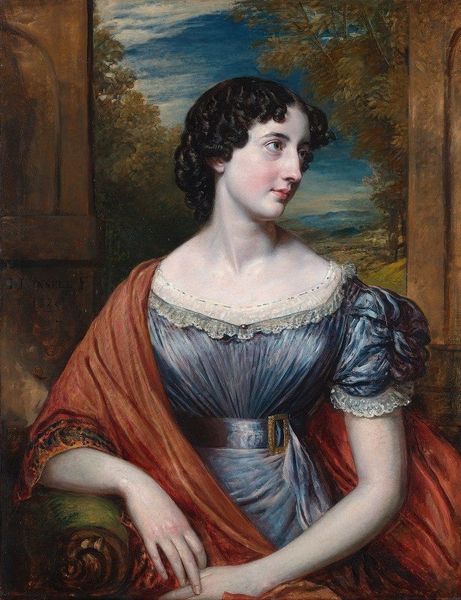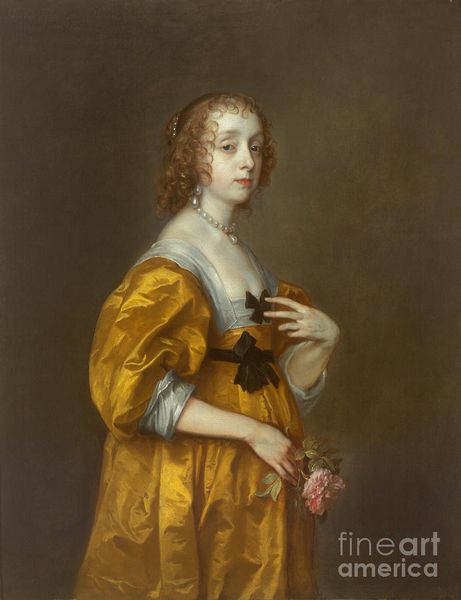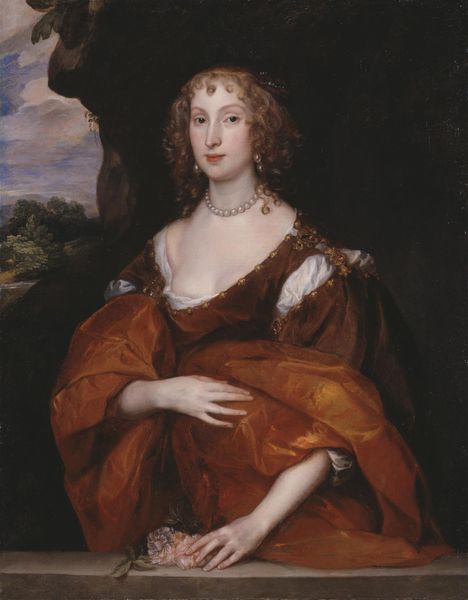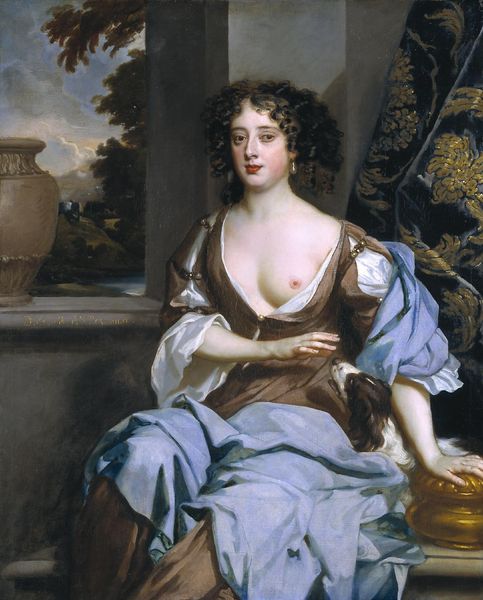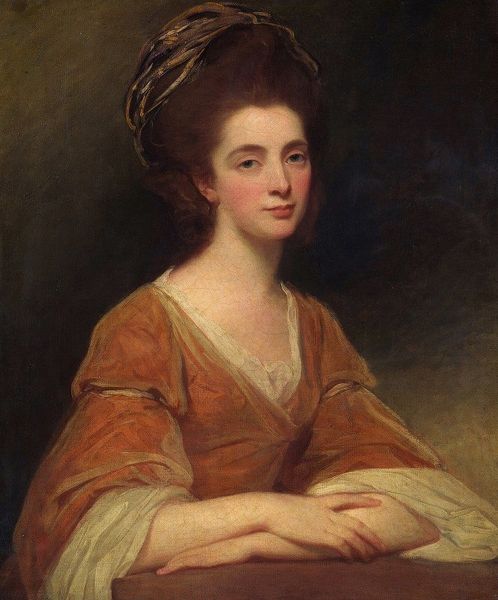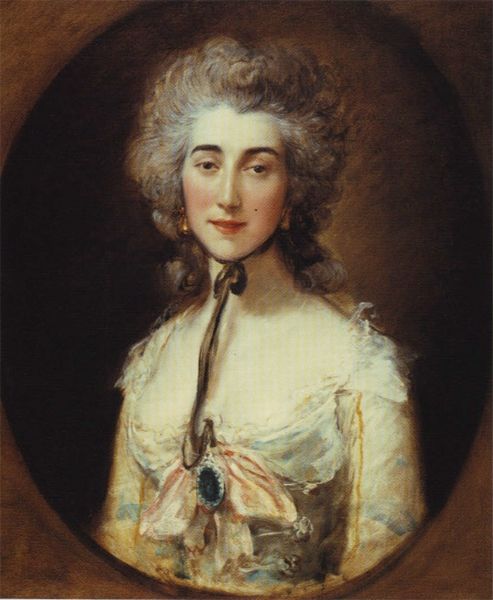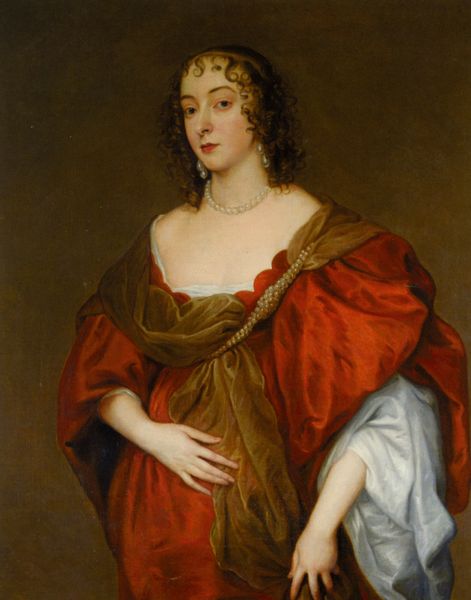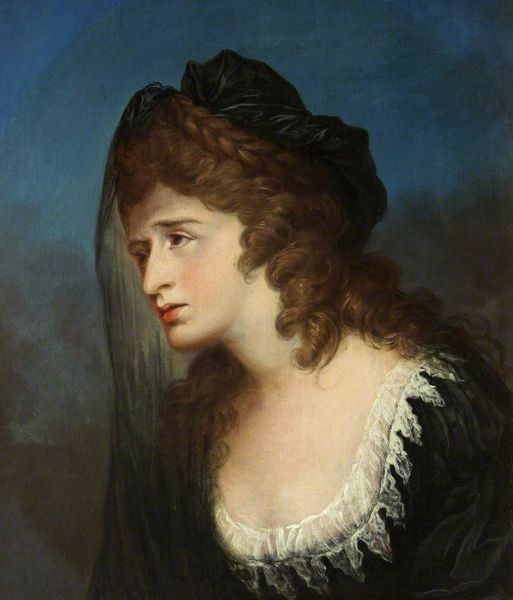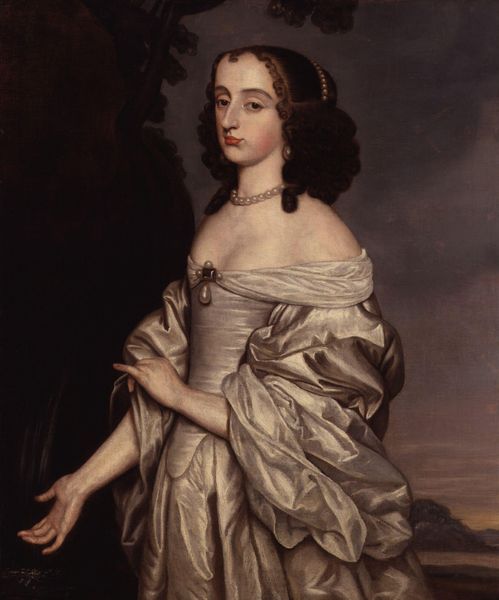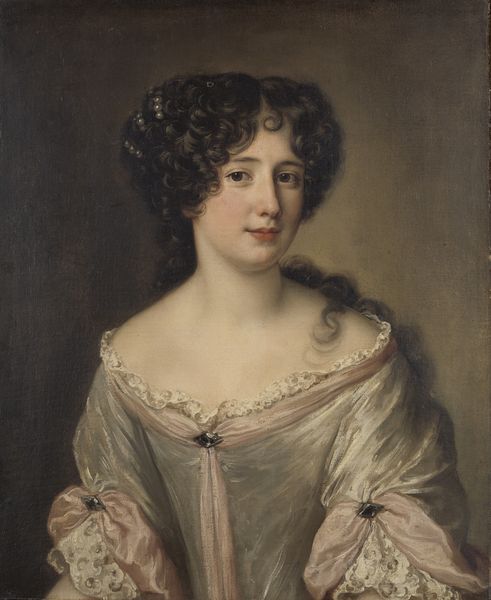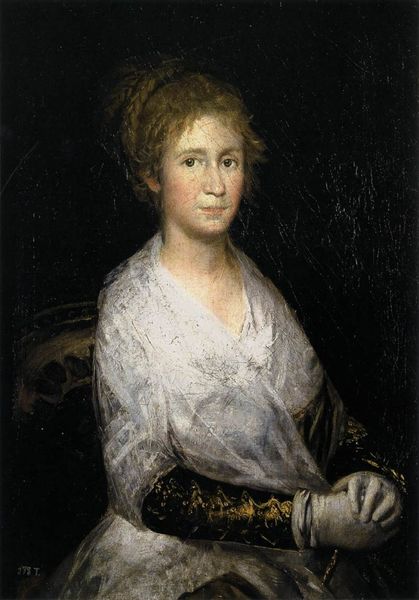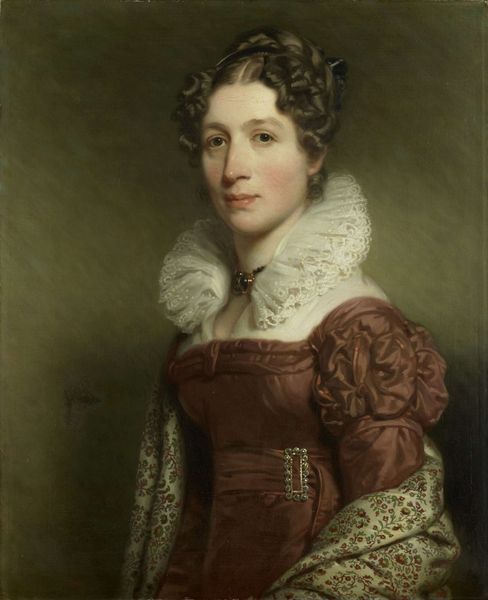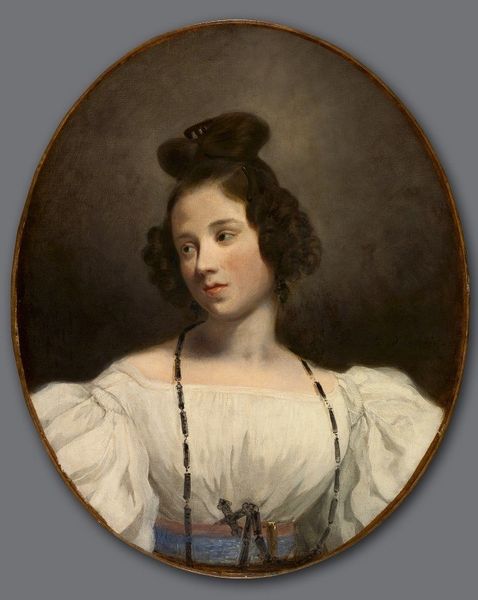
painting, oil-paint
#
portrait
#
baroque
#
painting
#
oil-paint
#
history-painting
Copyright: Public domain
Curator: Looking at this portrait, I'm immediately struck by the wistful, almost melancholic, air about her. What do you think? Editor: It’s quite remarkable. We’re observing “Queen Henrietta Maria,” rendered in 1638 by the celebrated Anthony van Dyck using oil paint. Curator: Van Dyck truly captures a specific kind of pensiveness, doesn't he? Something fragile almost seems to be hovering just under the surface. Is that due to the portrait style? Editor: The angle accentuates that delicacy, undeniably. He’s captured her in profile, directing our focus to the aristocratic line of her nose and jaw. Note how the cascade of soft curls offsets the rigidity, however. The artist expertly balances structure with fluidity. Curator: The pearls, too, emphasize that gentle vulnerability, strung along her neck like captured tears, wouldn't you say? And that sheen! Are those even pearls? Editor: Observe how van Dyck’s brushstrokes bring them to life through masterful chiaroscuro—the stark contrast between light and shadow. These baroque portraits functioned, quite deliberately, to assert status and project an aura of refined elegance. Curator: Ah yes, elegance perhaps…though it hints at much more. Given the turmoil of the times, one can't help but feel the weight of history in that expression, especially knowing what she faced. Did all that royalty even appreciate these portraits that celebrated their elegance, or was it expected to look beautiful no matter the situation? Editor: Certainly, Henrietta Maria endured considerable hardship in England, caught between courtly duties and widespread suspicion of her Catholic faith during times of tremendous religious tensions. In a very subtle way, these types of portraits could challenge a status quo through their subversive approach and aesthetic beauty. Curator: Absolutely. So, it seems as if this portrait isn't just a historical artifact; it's also an echo of a soul caught in the crosscurrents of history. Editor: Indeed. Van Dyck provides not merely a representation, but an articulation of power tempered by the undeniable sensitivity of its bearer. It gives us much to consider in understanding the portrait's historical and aesthetic significance.
Comments
No comments
Be the first to comment and join the conversation on the ultimate creative platform.
